Post by Catriona Swallow, undergraduate in Psychology and Social Science pursuing a minor in Interdisciplinary Neuroscience at Portland State University. Cat is a Research Assistant in Dr. Tessa Dover’s StRIID Lab and President of the Neuroscience Club at PSU.
The Importance of Neuroscience Education for All
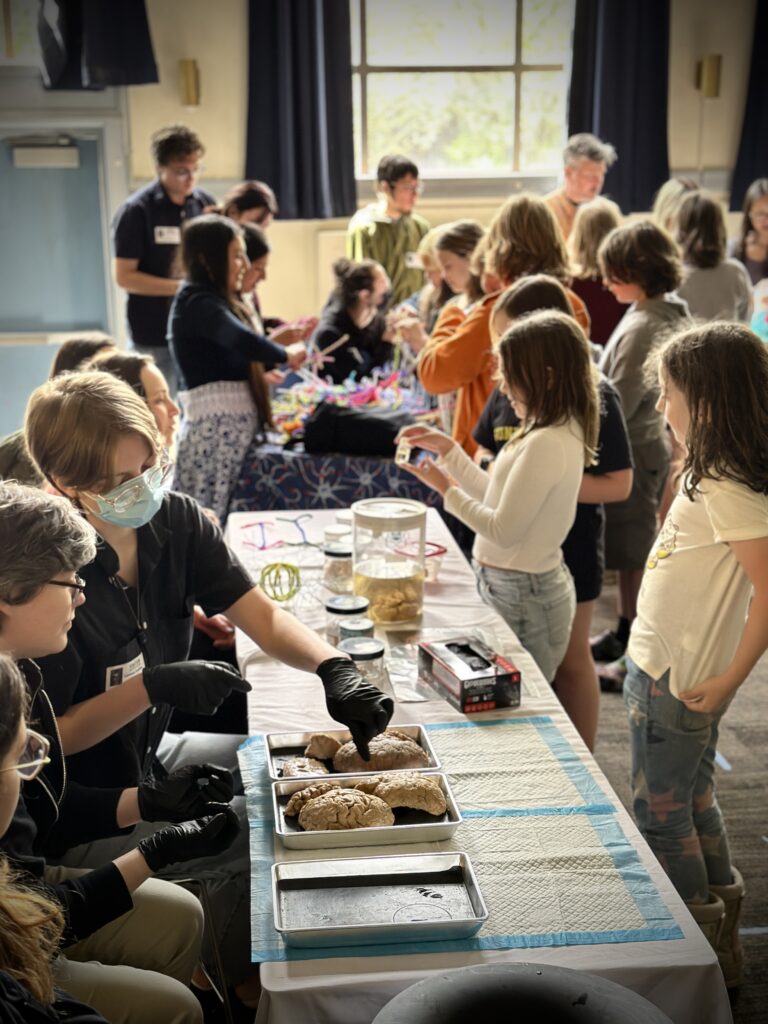
It was a bright April day when I headed to Sunnyside Environmental School for my first Northwest Noggin outreach visit of the week. Our visit perfectly coincided with an exciting educational adventure for these 4th graders: their unit on the brain! The enthusiasm in the room was intoxicating as we settled down for some intriguingly complex and insightful questions from young Portlanders, including:
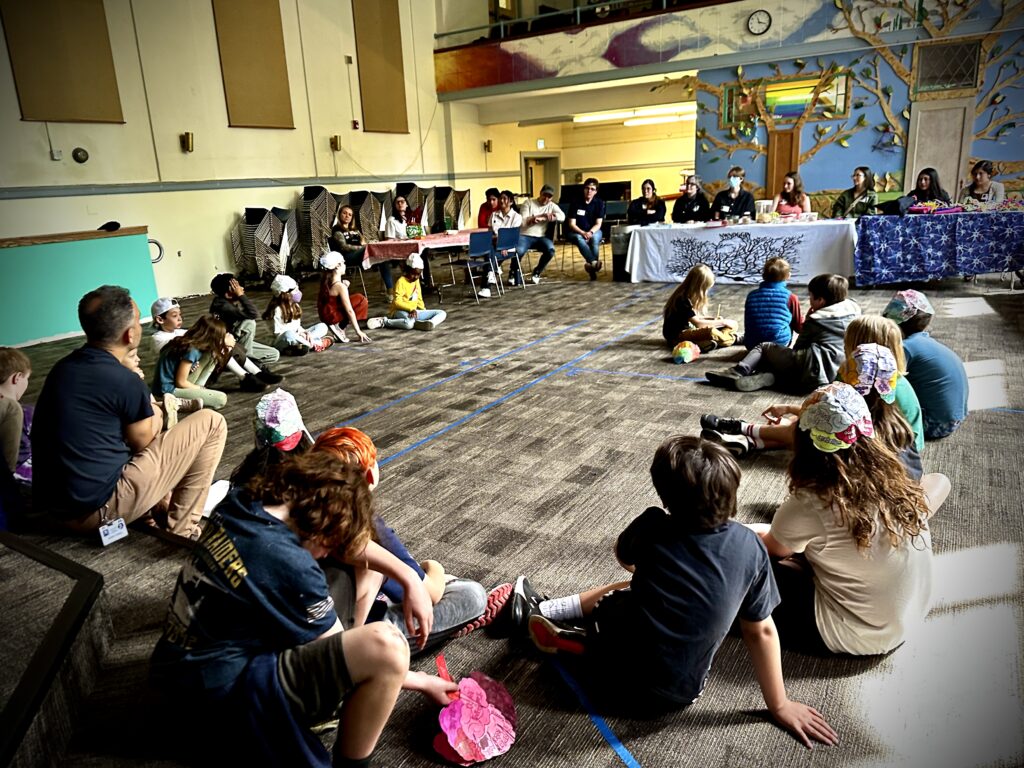
“How does sleep deprivation affect the brain?”
“Is there a limit to how many memories we can have?”
“What would happen without an amygdala?”

LEARN MORE: Without my amygdala, would I get scared?
These questions highlighted just how much these kids already knew about their brains and how they’d connected this awareness to other areas of their lives such as sleep and memory. During our return for a second visit to Sunnyside, it became clear how much students had applied their knowledge of neuroscience to their daily experiences.
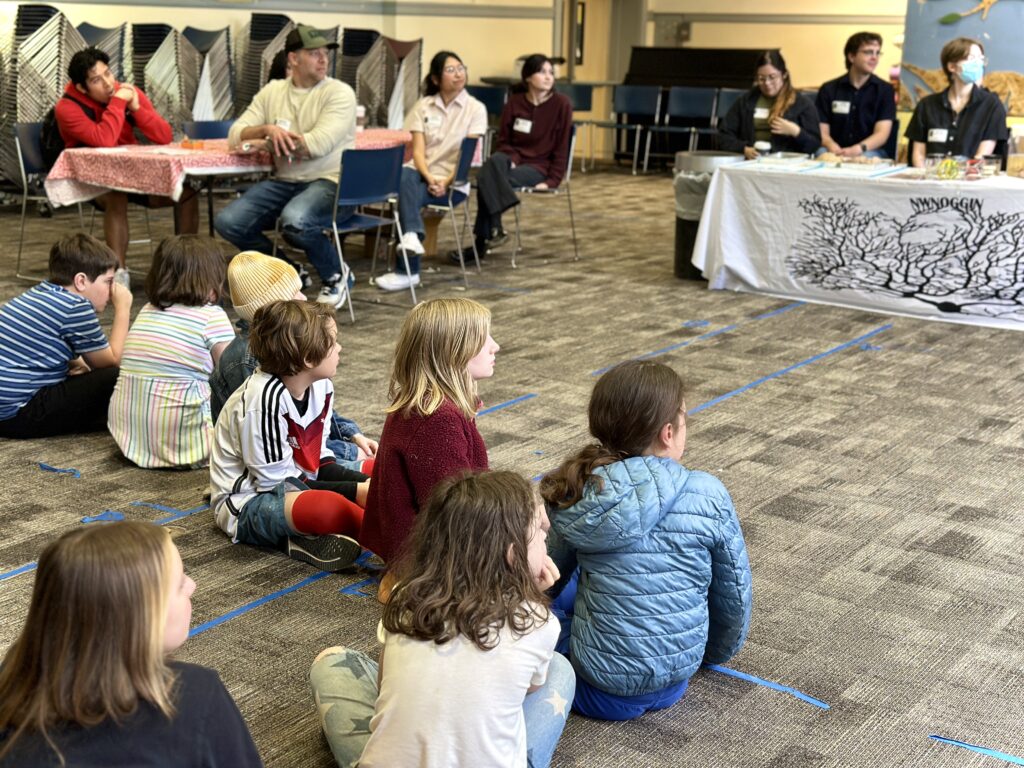
A 4th grade teacher confided in us that when a student was having an especially difficult moment the day after our first visit, they proclaimed: “It’s okay. It’s not just me. It’s my amygdala!” In the context of neuroscience, they were absolutely right.
“It’s not just me – it’s my amygdala!”
Imagine you see something scary, say a bear in the Northwest woods, or a shadowy figure, or perhaps the grade from your last quiz. Your amygdala can initiate a “fight or flight” response, and other stressful bodily changes, influencing how you react to emotion-provoking moments of many kinds. Depending on your past experiences and the developing responsiveness and circuitry of your amygdala, you might react to environmental stimuli in a number of different ways.
The amygdala plays a pretty important role in our emotions.

In fact, the amygdala undergoes some intense changes throughout adolescence that may have contributed to our young friend’s stressful afternoon. As a part of your limbic system, the amygdala works closely with additional brain areas, including your thalamus, hypothalamus, hippocampus and pre-frontal cortex (or PFC). Together, these brain structures help us regulate our emotions, link emotions to memory, and process important sensory and social information.

During adolescence, the connection between the amygdala and your prefrontal cortex is constantly adapting. In adulthood, your prefrontal cortex is (hopefully!) “regulating” your amygdala and all of the myriad ways it reacts to things. The only problem? The connection between the two isn’t strong or developed enough to effectively regulate your emotions during childhood!
So it’s no wonder that we often have stronger emotional reactions as children. Your PFC needs experience and training. The brain simply hasn’t learned to regulate itself – yet.
LEARN MORE: What is the amygdala?
LEARN MORE: Role of amygdala in decision making
LEARN MORE: Stress, memory, and the amygdala
LEARN MORE: Amygdala response to facial expressions in children and adults
LEARN MORE: Age-related changes in amygdala structure and function
LEARN MORE: Amygdala volume and anxiety levels
LEARN MORE: Origins and roles of the amygdala
LEARN MORE: The amygdala processes positive and negative emotions
The good news is that there are effective ways to regulate your amygdala, and train your prefrontal cortex, even during childhood and periods of stress. Research has focused on three main methods for regulation: distraction, cognitive reappraisal, and labeling.

Distraction
Distraction is exactly what it sounds like – distracting yourself from a stressful situation! Rather than simply watching a TV show, the distraction method tries to direct your active, engaged attention away from the negative aspects of a situation and towards what might be seen as more positive.
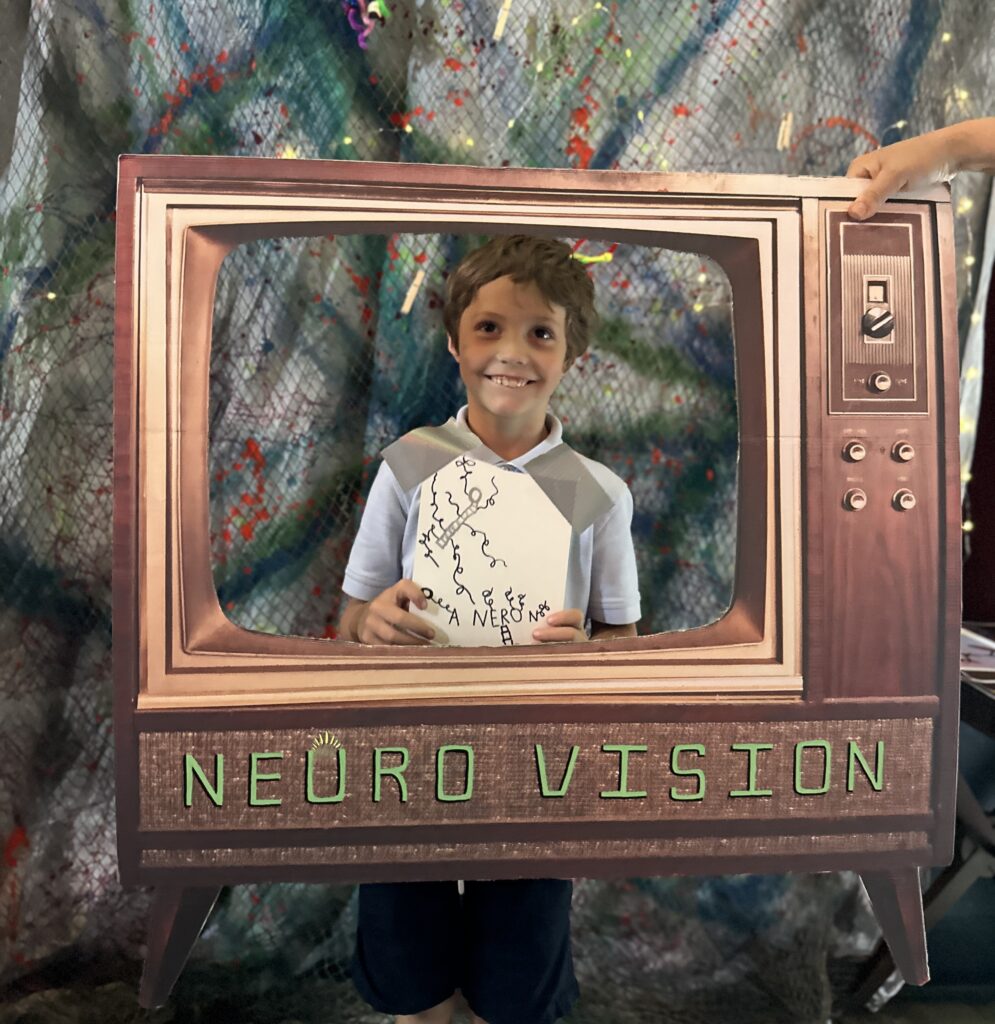
LEARN MORE: Is Distraction an Adaptive or Maladaptive Strategy for Emotion Regulation?
LEARN MORE: Distraction and Expressive Suppression Strategies in Regulation of High- and Low-Intensity Negative Emotions
Cognitive reappraisal
Cognitive reappraisal is essentially changing your story, or reframing your thinking. You can try reinterpreting a situation by asking yourself about your own point of view. Is there another way to think about what’s happening? Is there a different story you can tell?
A few good questions to ask yourself while practicing reappraisal are: What evidence do I have that supports my initial impression of the situation? What did I learn from the experience?
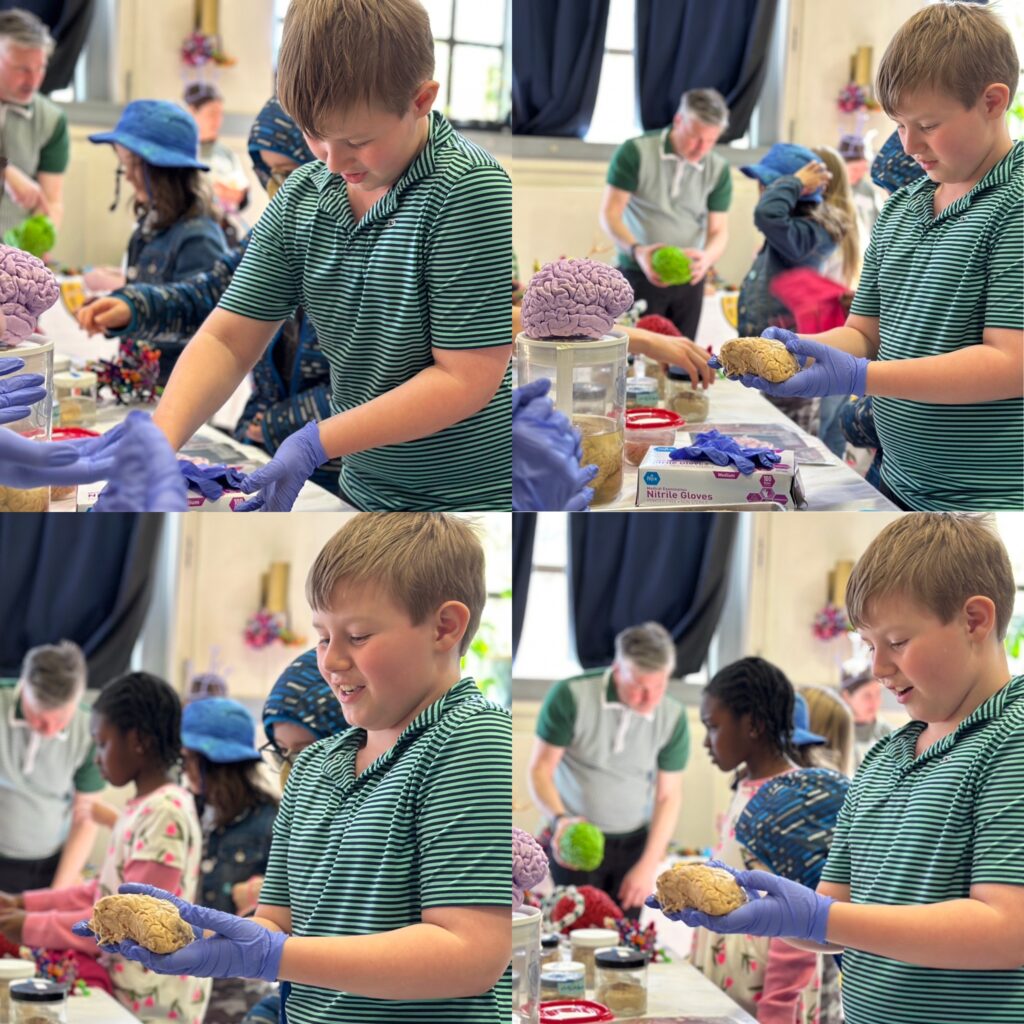
LEARN MORE: Cognitive Reappraisal and Acceptance: Effects on Emotion, Physiology, and Perceived Cognitive Costs
LEARN MORE: The Neural Bases of Emotion Regulation: Reappraisal and Suppression of Negative Emotion
Labeling your emotions
The third strategy involves labeling your emotions. Putting a name to what you’re feeling allows you to better process the emotion and perhaps find a solution that works for you. All of these methods can reduce activation of your amygdala and increase inhibitory control from your prefrontal cortex!

LEARN MORE: Adversity, the Amygdala, and the Hippocampus
LEARN MORE: Life Stress and Amygdala Volume
LEARN MORE: Prenatal Stress and Amygdala Regulation
LEARN MORE: Distraction, reappraisal, and labeling
LEARN MORE: Affect labeling: The role of timing and intensity
LEARN MORE: Emotional regulation strategies in daily life: the intensity of emotions and regulation choice
LEARN MORE: Emotion regulation in action: Use, selection, and success of emotion regulation in adolescents’ daily lives
LEARN MORE: Positive and Negative Emotion Regulation in Adolescence
LEARN MORE: Emotion-Related Self-Regulation and Its Relation to Children’s Maladjustment
LEARN MORE: The Importance of Emotional Regulation in Mental Health
Importance of Neuroscience Education

Thankfully, this 4th grader’s expanding knowledge of neuroscience was a comfort and a tool for their own emotional regulation. Numerous studies and curricula have identified additional ways in which learning more about your brain can help you in everyday life.
MindUP

The MindUp Program offers neuroscience-based education in the home and classroom to assist in mental well-being by promoting mindfulness and positive psychology. The Goldie Hawn Foundation has helped K-8 students improve their academic and social health while supporting research on the specific mechanisms which might contribute to and alleviate mental stressors.
LEARN MORE: MindUP
LEARN MORE: Mindful Research
LEARN MORE: Axons @ Ardenwald!
Pain Neuroscience Education
Neuroscience education is clearly a powerful tool for promoting healthier behaviors and thought patterns. Introducing a Pain Neuroscience Education (PNE) curriculum to middle school students experiencing chronic pain led to significant positive outcomes.
The PNE curriculum covered the origin of pain, our tissue damage sensing receptors (or nociceptors), what happens when acute, short term pain becomes chronic and the role of individual beliefs. When students understood the neurophysiology behind their pain, they showed a significant increase in healthy pain-related beliefs and a decrease in the use of pain medication.
Learning about the brain helps.
LEARN MORE: Behavior Change Following Pain Neuroscience Education in Middle Schools
LEARN MORE: Pain Neuroscience Education for children with chronic pain
LEARN MORE: Why It’s Important to Teach Kids About Neuroscience
LEARN MORE: Neuroscience-based Health Education for High Schoolers
LEARN MORE: Growing Brains, Nurturing Minds: Neuroscience as an Educational Tool
LEARN MORE: How Neuroscience Can Help Your Kid Make Good Choices
The Illicit Project
Neuroscience education has also proven to be a remarkable intervention for reducing youth alcohol and other drug use. In Australia, The Illicit Project uses a neuroscience curriculum to teach harm reduction principles in high schools.

LEARN MORE: The Illicit Project
Similar to MindUP, The Illicit Project relies on positive psychology and knowledge of neuroscience to promote healthy understanding and behavior. Students want to explore why they should avoid certain drugs, rather than simply being told not to use them.

In peer-led informational sessions, students learned exactly how drugs impact their brain, specific dangers they might face during drug use, and how to minimize harm to themselves if they experiment. Additionally, students were taught how to navigate social situations in which drugs were involved. In schools where The Illicit Project was implemented, there was reduced binge drinking, less MDMA and nicotine use, and increased drug literacy. The Illicit Project is another example of how neuroscience education can improve outcomes in multiple aspects of life, and among multiple age groups.

LEARN MORE: Pain Neuroscience Education for children with chronic pain
LEARN MORE: Behavior changes following Pain Neuroscience Education
LEARN MORE: Seductive Allure of Neuroscience Explanations
LEARN MORE: Neuroscience-based Harm Reduction Education more effective for students
Where are the brains in biology?
Despite all of this evidence about how important neuroscience education is, the Brain Unit the 4th graders were enjoying at Sunnyside Elementary may be one of the ONLY opportunities they’ll have to learn about the brain in public school!

The Next Generation Science Standards
Although teachers do have some flexibility, both federal and Oregon Next Generation Science Standards (NGSS) require NO education on the brain beyond 4th grade!
The 4th grade unit is “From Molecules to Organisms: Structures and Processes,” and focuses on the macroscopic structures of animals and plants. The brain is only mentioned briefly in standard 4-LS-2, where students learn broadly about how animals sense stimuli, process information in their brain, and respond in various ways. The brain can also be optionally referenced to meet standard 4-LS1-1.
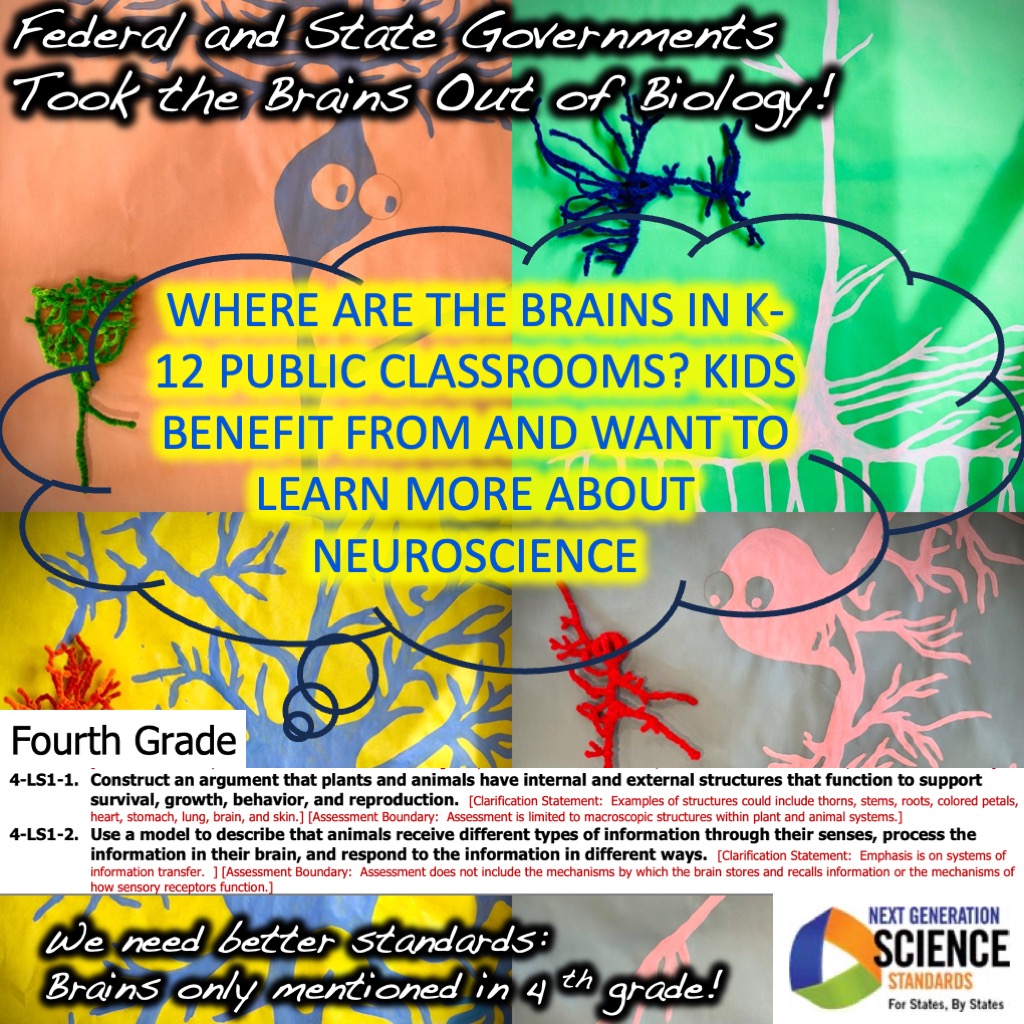
However, the standards are limited to “systems of information transfer” and exclude brain mechanisms that allow for information recall, perception, memory, social decision making or emotional regulation – the kind of material that the students I’ve met, along with their teachers, really want to explore!

Of course the Next Generation Science Standards are just that – standards.
Thankfully, teachers are able to develop their own curricula as long as their students can meet these standards. This likely accounts for our Sunnyside 4th graders more extensive knowledge of topics that are formally kept from them by the NGSS, such as additional neuroanatomy, memory or sleep.
I personally found these Next Generation Science Standards extremely difficult to navigate, even as someone with a background in STEM and STEAM education.
The matrix provided to explain the concepts, expectations and principles is unclear about what to cover. Core concepts such “The brain is the body’s most complex organ” lack details on what this means or how students should be taught. If I were a K-12 teacher, the NGSS would leave me unsure of how to best support my students in their STEM/STEAM education about their developing brains.
LEARN MORE: Putting brains back in biology
LEARN MORE: Next Generation Science Standards Topics
LEARN MORE: NGSS Essential Principles of Neuroscience
LEARN MORE: Alignment of Oregon’s Science Standards with NGSS
LEARN MORE: NW Noggin Takes Action
LEARN MORE: The Case for Neuroscience Research in the Classroom
Synapse School!
There are other approaches.
For example at the Synapse School, a private, tuition charging K-8 in Menlo Park, California, neuroscience researchers work with educators to investigate the impact of education on child brain development. Students at the school have the opportunity to visit the on-campus Brainwave Learning Center, where they can watch how their brain waves change as they engage in educational tasks and mindfulness. Middle school students also participate in an intensive unit on neurobiology and can apply to be a research assistant at the Brainwave Learning Center. The program has had superb effects at the school, with high student engagement and personalized instructional support. Another educational practice employed at the Synapse School is Social-Emotional Learning (SEL), which provides students with skills to navigate social situations and regulate emotions. Children who participate in SEL programs have higher academic achievement, and improved emotional regulation and social skills. The benefits of neuroscience education and neuroscience-based educational practices are difficult to contest.
LEARN MORE: The Benefits of School-based SEL
LEARN MORE: SEL – The Lessons From Neuroscience
HOWEVER: an opportunity like this is pretty limited to those with a lot of money.
So what about public science education?
Why are the NGSS so lackluster when it comes to neuroscience in our public schools?
STEM education for kids has caused controversy among some people. Even incorporating climate change and evolution into the NGSS, topics backed by extensive, replicated research, stirred backlash from certain lawmakers and religious groups. Given that the NGSS are developed at the federal level with input from multiple states, there are many voices and opinions in the conversation around how we’re teaching our children. Despite the evidence that STEM education is beneficial for young Americans, there are still groups that don’t think that our brains belong in biology.
LEARN MORE: From Anti-Government to Anti-Science: Why Conservatives Have Turned Against Science
LEARN MORE: Scientific Illiteracy and the Partisan Takeover of Biology
Young people love brains!
Yet when students are educated about their brain, they’re provided with the tools to self-regulate and engage in critical thinking. When children understand how their brain works, they have agency and can make more conscious decisions about how they want to live.

If a whole generation of kids had the opportunity to explore neuroscience, it could create large-scale changes in how we discuss and address issues like neurodiversity and mental health. Apparently this scares some people – but so many of us find it inspiring!
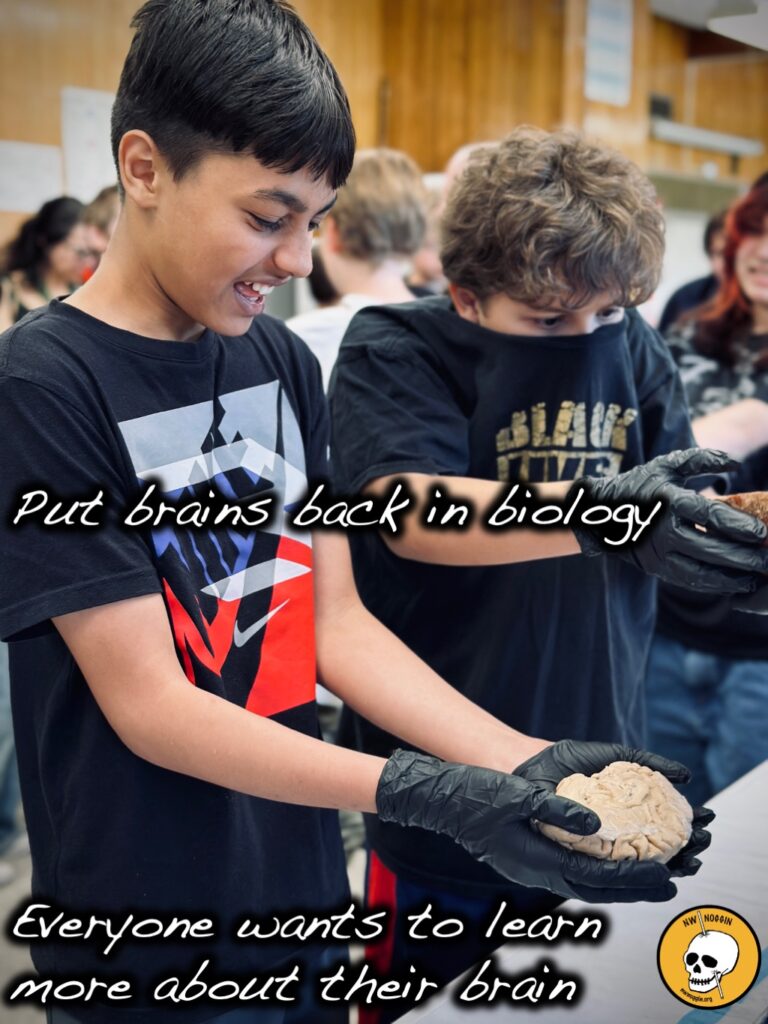
One concern may be that addressing mental health in schools can cost money. Necessary accommodations such as notetakers, altered curriculum, and mental health counselors are not free. What fails to be brought up in the debate is that promoting mental health, especially in schools, almost always results in greater economic benefits rather than costs. Targeted interventions for students with mental health or neurological concerns are more cost-effective than universal interventions.
Contrary to popular belief, teaching kids about their brains and helping them understand their mental health saves more than it costs. Putting the brains back in biology would not only improve our kids’ quality of life, but might strengthen our broader economy, too.
LEARN MORE: Next Generation Science Standards Topics
LEARN MORE: Economic Benefits of Social-Emotional Learning
LEARN MORE: Economic Benefits of Mental Health Interventions
Neuroscience at Portland State
I consider myself very lucky to be surrounded by a community that celebrates and emphasizes the importance of accessible neuroscience outreach and education.
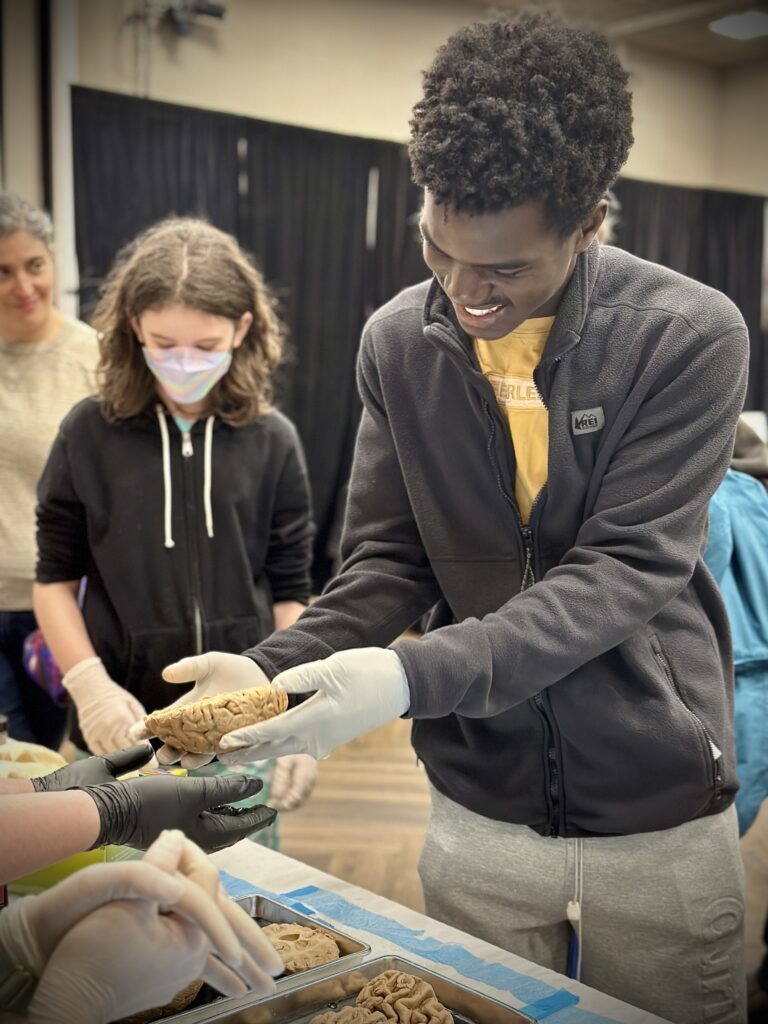
Individuals at Portland State University have participated in great programs including free public outreach with NW Noggin, an active Neuroscience Club, the development of our Neuroscience Minor in 2021, and our current endeavor to create a Neuroscience Major at our school!
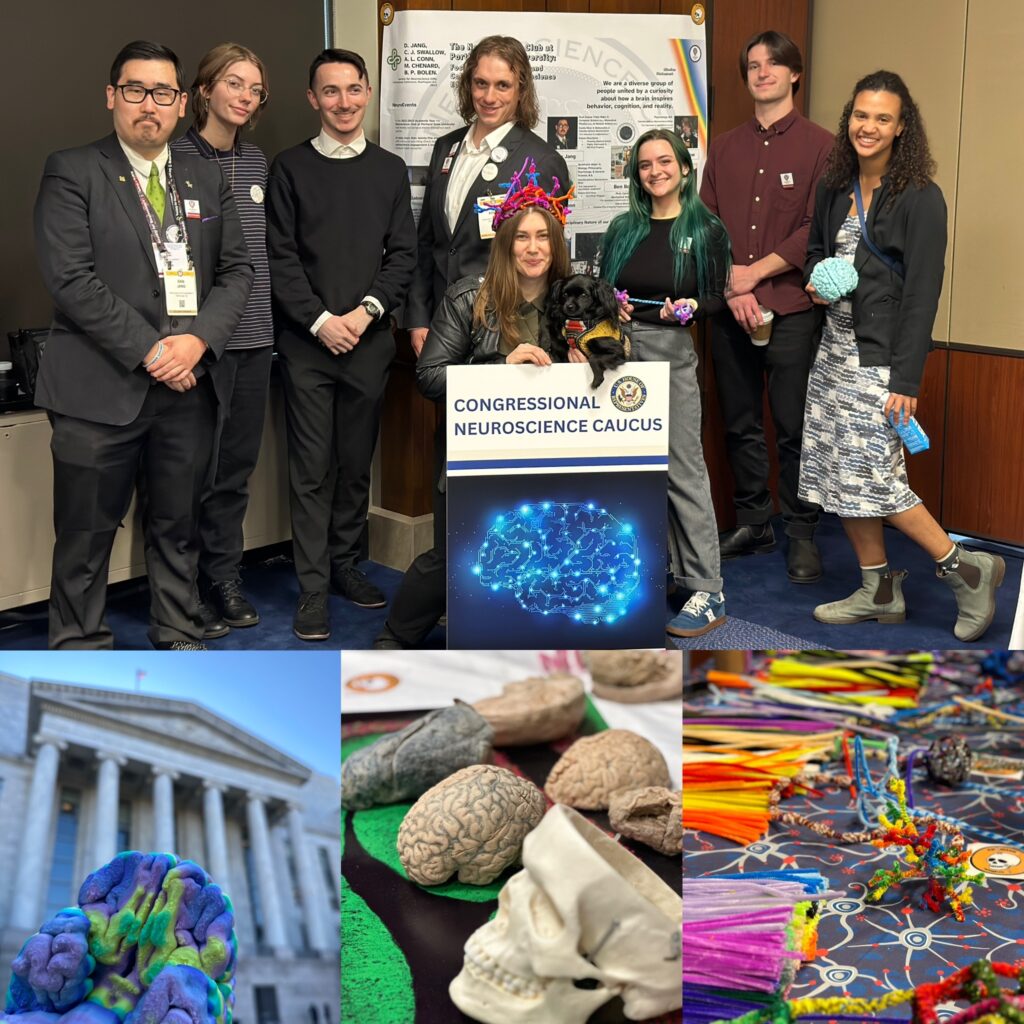
Enthusiastic undergraduates and a few art and neuroscience teaching faculty have had the greatest impact on the advancement of neuroscience education at Portland State University. It’s been driven by those who go places and love to learn and teach.

The student-run Neuroscience Club fiercely advocated for the Interdisciplinary Neuroscience minor that’s now offered at PSU. Club members surveyed students, collected data, researched neuroscience programs at other schools and created curricula, successfully convincing administrators to implement a formal track of study – the Interdisciplinary Neuroscience minor as we know it today.
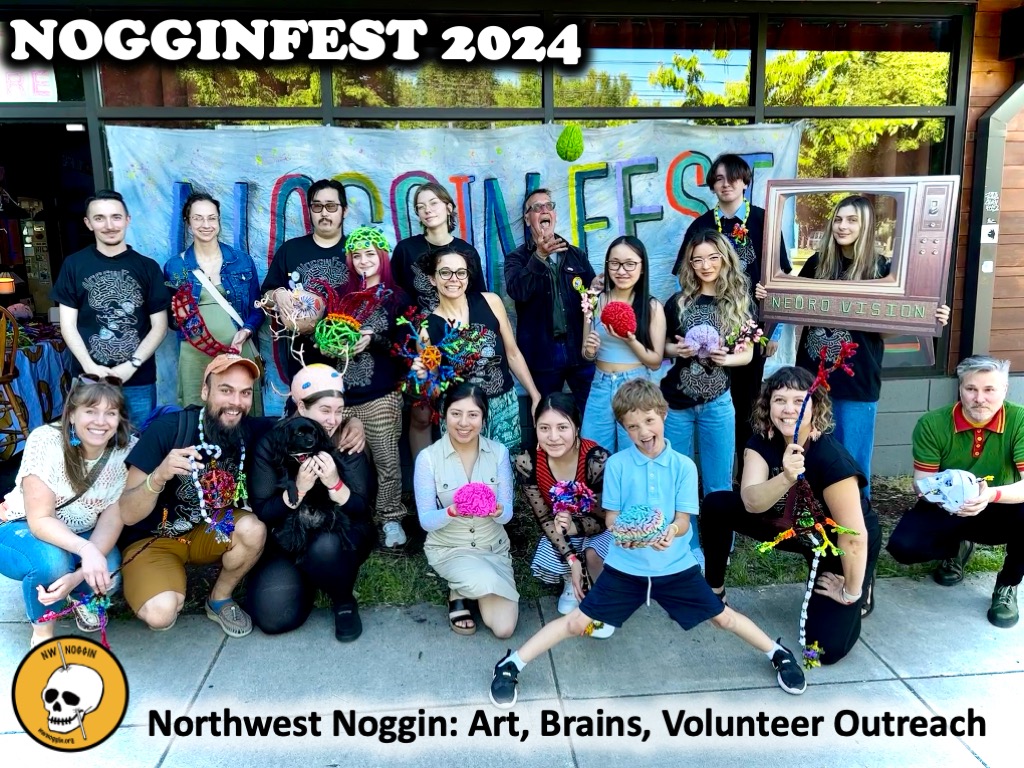
LEARN MORE: Interdisciplinary Neuroscience Minor @ Portland State
LEARN MORE: STEAM Ahead: A new interdisciplinary neuroscience minor at Portland State!
LEARN MORE: NOGGINFEST!
It’s been three years since our minor was implemented, and the passion for neuroscience at Portland State University has only grown. A stunning 67 undergraduates have already met the requirements for the minor since it launched during a pandemic in fall of 2021!
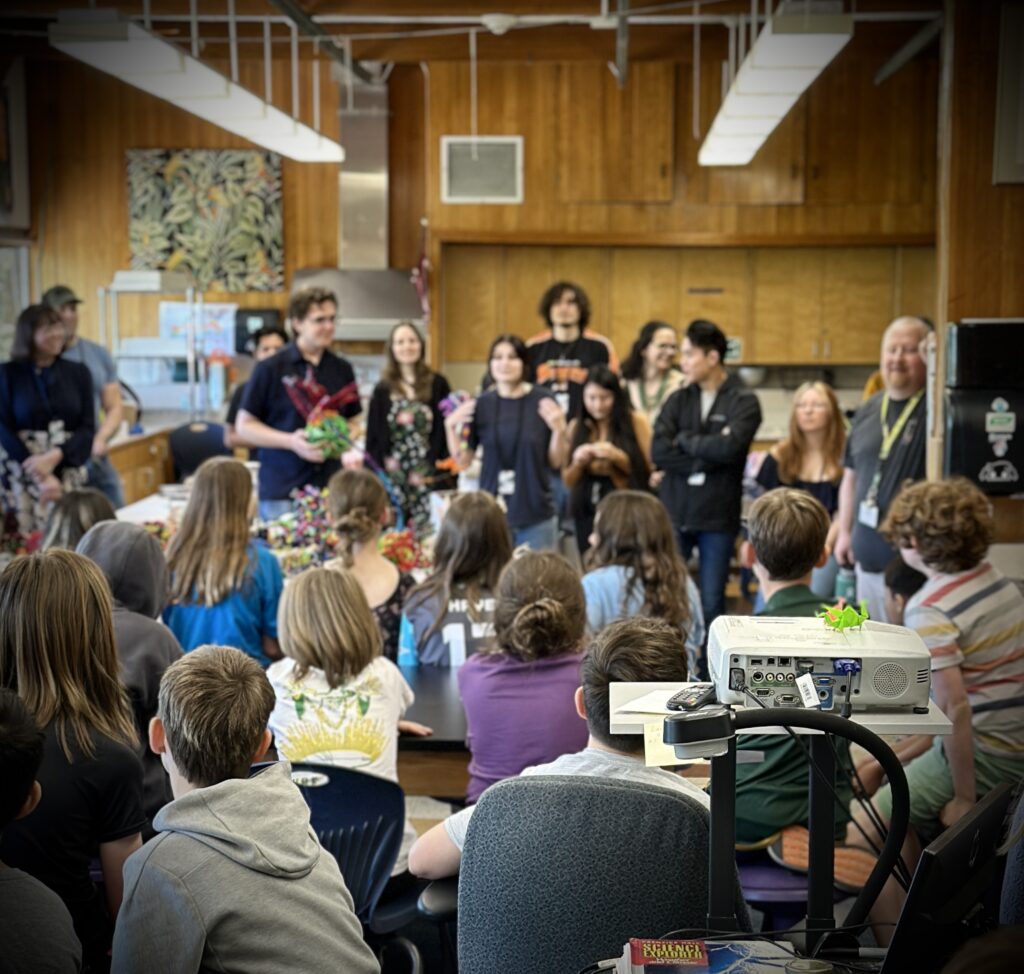
Students have flocked to the minor, participated in Noggin outreach visits and ongoing research, joined the Neuroscience Club, and presented at multiple conferences, including the international Society for Neuroscience (SfN) conference in Washington, D.C.
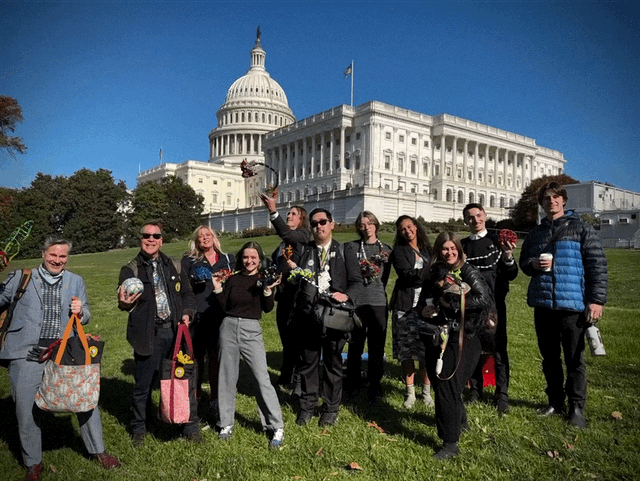
Last year, we even discussed our interdisciplinary neuroscience minor and the importance of arts-integrated outreach at a NW Noggin briefing to the Neuroscience and STEAM caucuses in the U.S. House of Representatives!
LEARN MORE: Noggin Takes DC
LEARN MORE: Noggin at the Society for Neuroscience
LEARN MORE: What is outreach like?
LEARN MORE: What is research like?
A Neuroscience MAJOR at Portland State?
People love brains, and they love art, and they want to leave campus with active, community-engaged faculty (faculty who actually show up campus in the first place :)) to learn from others and explore brain research. They want to let knowledge truly serve!

Given all the excitement around the minor, and the benefits of neuroscience education, the Neuroscience Club is now attempting to create a Neuroscience MAJOR at PSU.

Following in the footsteps of our predecessors, we’re currently distributing a survey for PSU students in an effort to assess the level of interest in a potential MAJOR program. Although the project is in its early stages, we’re confident that the data we collect will demonstrate how passionate PSU students are about the pursuit of neuroscience education.
The value of neuroscience education for all cannot be overstated. An Interdisciplinary Neuroscience major at PSU would offer crucial support not only to university students, but to community members as well. As we learned from our 4th grade class at Sunnyside, understanding your brain leads to healthier choices, more effective emotional regulation and better social integration.
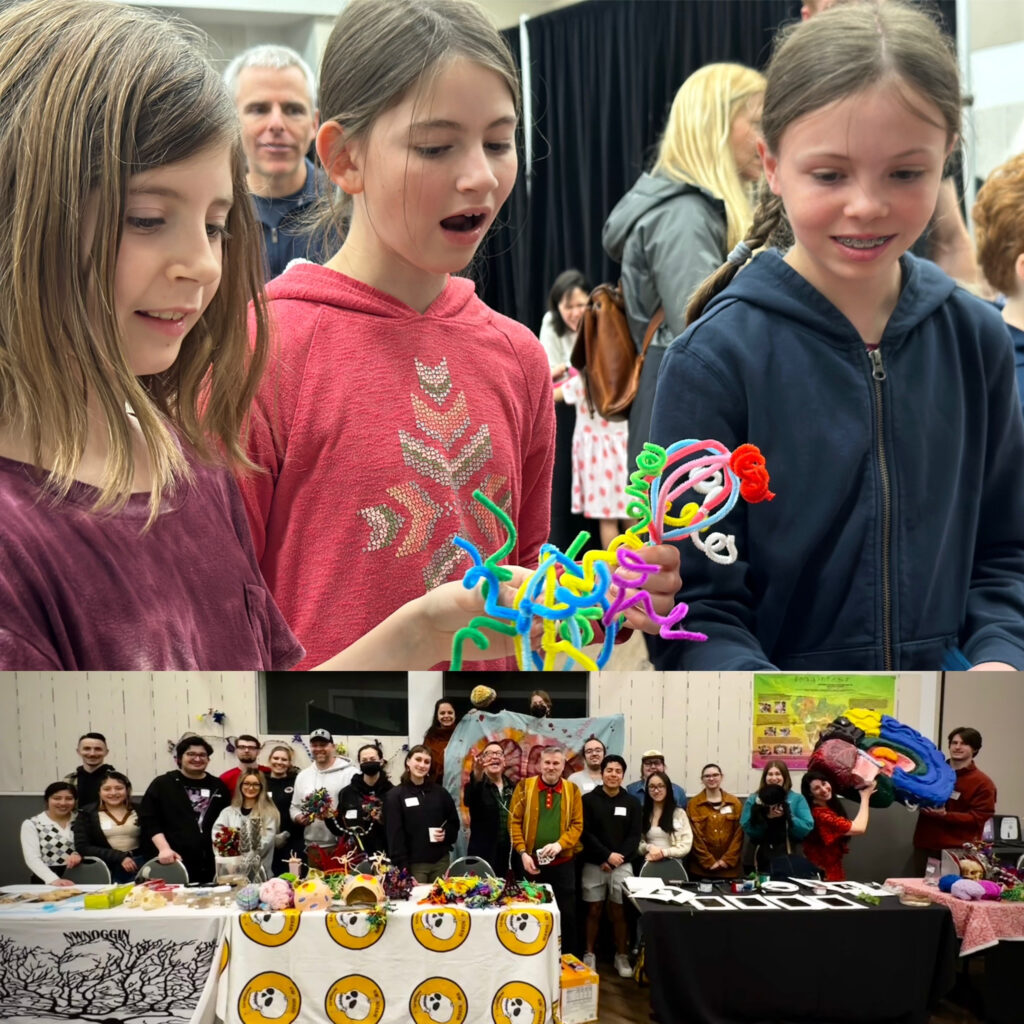
Students in the Interdisciplinary Neuroscience minor are already engaging in novel research while providing community outreach and education on the inner workings of the brain. The pursuit of the major program is an effort to advocate for our students and the wider community by emphasizing the importance of health, well-being, connection, and of course – accessible, public education.
LEARN MORE: What is research like?
LEARN MORE: What is outreach like?
Want to give your opinion on whether PSU should offer a NEUROSCIENCE MAJOR?
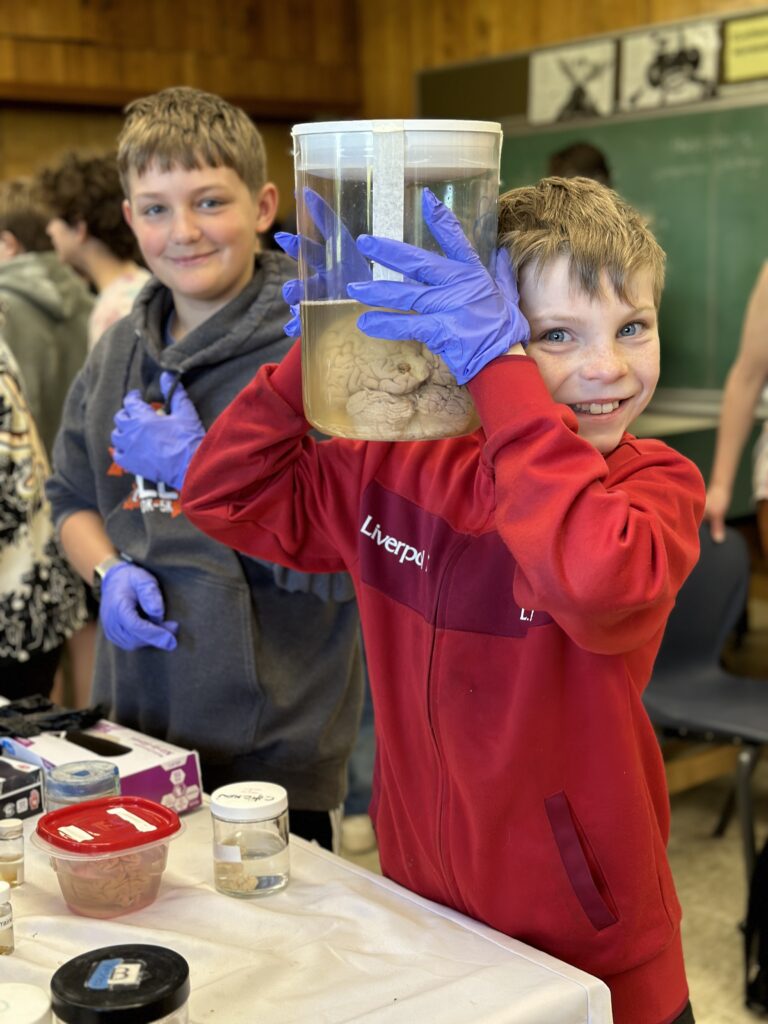
Take the survey here!


